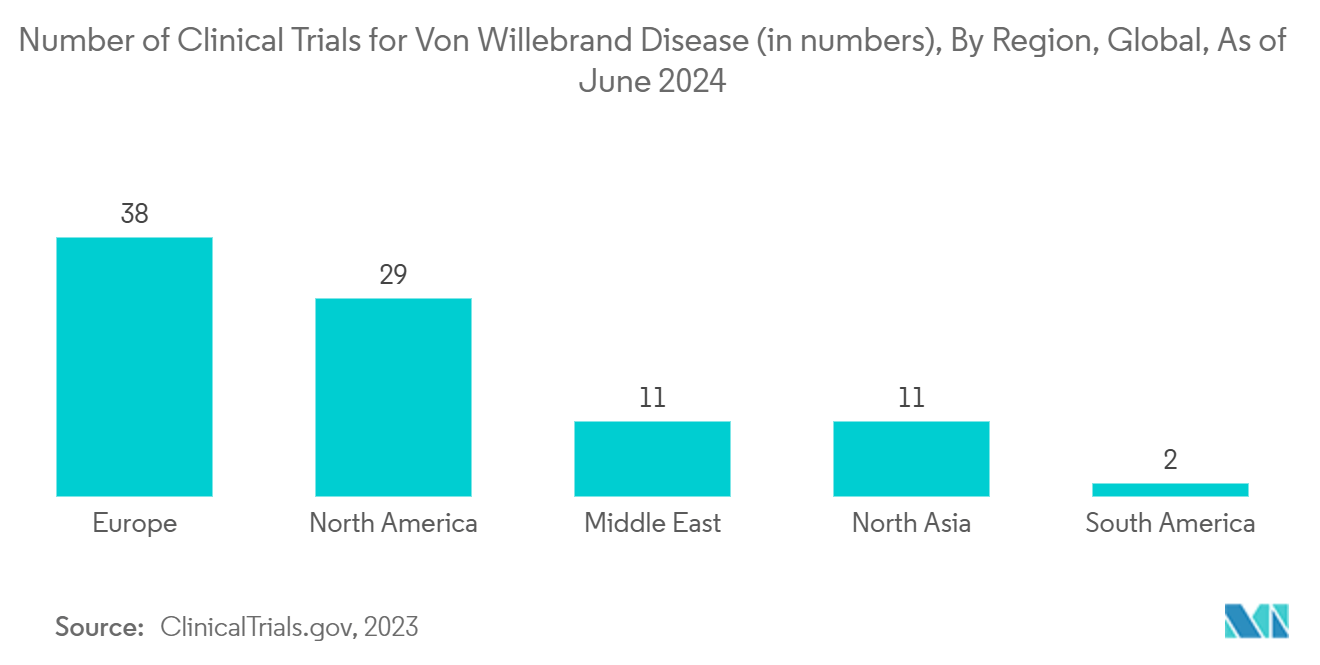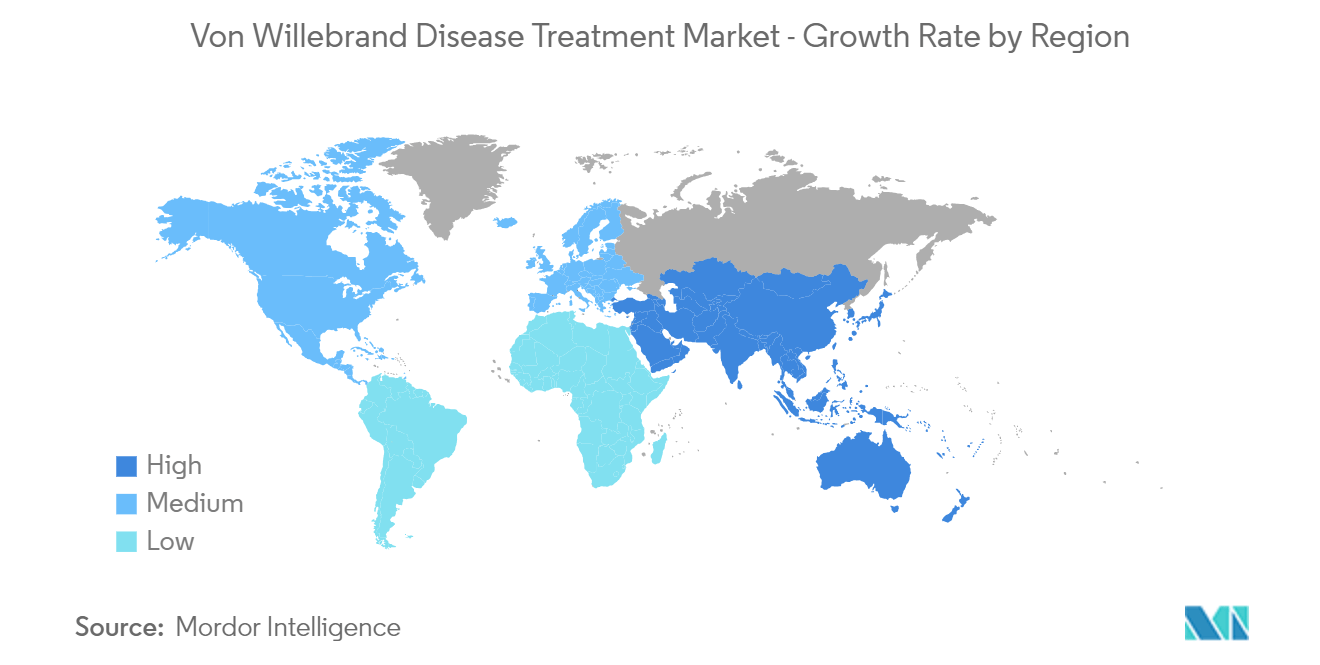Market Trends of Von Willebrand Disease Treatment Industry
Replacement Therapy Segment Expected to Register Significant Growth
The replacement therapy segment is anticipated to witness significant growth. Replacement therapy is referred to as the therapy involving the supply of a substance (such as a hormone or nutrient) lacking in or lost from the body. The replacement therapy segment is growing and is expected to continue growing over the forecast period.
Analysis of several studies and articles shows that treatment of VWD is primarily done with replacement therapies such as vWF and factor VIII plasma concentrates and recombinant vWF, which show effective results among patients. Hence, research is ongoing to evaluate the safety and efficacy of replacement therapies for VWD.
For instance, as per a research study published in the Blood Transfusion Journal in April 2022, a clinical trial program was conducted with a replacement therapy in pediatric patients treated with Wilfactin for up to 4.2 years. In 90.3% of episodes, good hemostatic efficacy was achieved, and a safe and effective treatment was provided in patients aged below six years with severe VWD. Thus, such research demonstrating positive results generates demand for the availability of replacement therapies in the market and is expected to boost the segment's growth.
The increasing number of product approvals is one of the major factors expected to fuel the segment's growth over the forecast period. Several market players are engaged in obtaining approvals for replacement therapies for the treatment of VWD. For instance, in January 2022, the United States Food & Drug Administration (FDA) approved Takeda Pharmaceutical Company Limited's VONVENDI [Von Willebrand factor (Recombinant)] for routine prophylaxis. This approval is designed to reduce the frequency of bleeding episodes in patients with severe type 3 Von Willebrand disease (VWD) who currently rely on on-demand therapy. VONVENDI is notable as the only recombinant Von Willebrand factor (VWF) replacement therapy available. It marks the FDA's first endorsement for routine prophylactic use, specifically targeting the reduction of bleeding episodes in patients with severe type 3 VWD.
Thus, the significant efficacy of replacement therapy in VWD and the increasing number of product launches are expected to contribute to the segment’s growth over the forecast period.

North America Expected to Hold a Significant Market Share Over the Forecast Period
North America holds a significant market share, and this trend is expected to continue during the forecast period. The factors attributing to the high market share of North America are the consistent focus on cost-effective and innovative drugs and the increasing prevalence of the disease across the regional countries.
The United States, among other regional countries, has shown growth in the market studied. The major factors contributing to the market growth in the United States are the rising incidence of Von Willebrand disease, the growing number of strategic initiatives, and the increasing number of patient assistance programs. For instance, as per the 2023 data update by the National Hemophilia Foundation, 1 in 100 people in the United States have been found to have VWD every year. Therefore, this burden of the disease is creating a significant demand for the availability of innovative treatments in the country, contributing to the regional market’s growth.
Several initiatives are being undertaken to raise awareness, which, along with VWD's product approvals, are fueling market growth. For instance, in April 2024, Octapharma USA Inc. received orphan drug exclusivity from the US FDA for its product, wilate. Wilate is a lyophilized powder for intravenous injection designed for routine prophylaxis. It aims to lessen the occurrence of bleeding episodes in individuals aged six and above diagnosed with Von Willebrand disease (VWD).
Thus, the regional market is expected to grow significantly during the forecast period due to the factors mentioned above.



